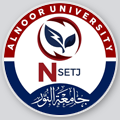Abstract
This case study looks at the design and technology of photovoltaic cells and assesses Bangladesh’s advancements in using solar energy, including government programs. Because of Bangladesh’s continuous industrialization and population increase, the country’s energy needs are rising quickly. These issues can be resolved by solar photovoltaic (PV) cells, which provide a renewable energy source because of their adaptability, minimal environmental impact, and fuel independence. Due to its advantageous location, Bangladesh receives a significant amount of solar energy every day, which makes solar photovoltaic cells a viable choice. The Bangladeshi government has taken several steps to encourage solar energy, and organizations like the Bangladesh Power Development Board (BPDB) have helped carry out these initiatives. This paper has openly discussed the introduction of solar PV cells, the state of solar energy in Bangladesh now, the effects of government solar initiatives, environmentally friendly and sustainable solar technology, and, lastly, the disadvantages of solar PV cells. The analysis reveals that the renewable energy capacity is 1373.81 MW, and the contribution of solar technology is 1079.82 MW. Currently, Bangladesh can manage 1.94% of its total electricity generation with the help of solar energy. Conversely, CO2 emissions have decreased because of the use of solar energy. Solar photovoltaic cells do have many drawbacks, though, such as high upfront prices, a large space demand, and serious environmental issues related to their recycling and end-of-life treatment procedures, all of which make it difficult for them to be widely used. Along with highlighting the challenges and potential paths forward, it also highlights notable developments in solar power generation.
First Page
56
Last Page
74
Recommended Citation
Farhana, Kaniz; Khan, Borhan Uddin; Bhattacharjee, Aditya; and Mahamude, Abu Shadate Faisal
(2025)
"Unlocking Potential: A Case Study of Solar Photovoltaic Growth and Challenges in Bangladesh,"
The Nexus of Sustainability and Energy Technology Journal: Vol. 1:
Iss.
2, Article 1.
DOI: https://doi.org/10.63100/3080-1915.1005

